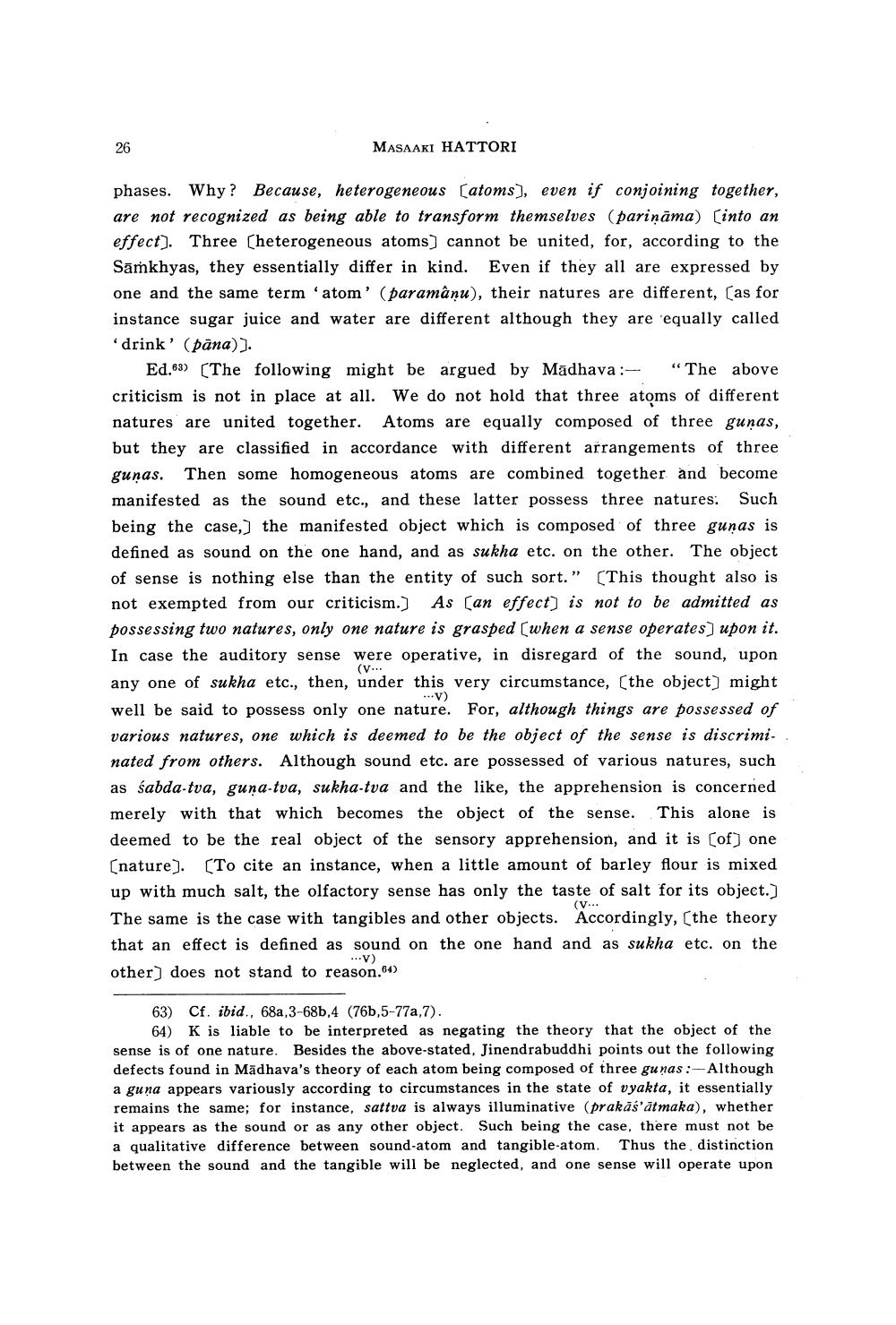________________
26
MASAAKI HATTORI
phases. Why? Because, heterogeneous Catoms], even if conjoining together, are not recognized as being able to transform themselves (pariņāma) [into an effect). Three (heterogeneous atoms] cannot be united, for, according to the Samkhyas, they essentially differ in kind. Even if they all are expressed by one and the same term 'atom' (paramânu), their natures are different, [as for instance sugar juice and water are different although they are equally called 'drink' (pāna)].
Ed.63) [The following might be argued by Madhava:- "The above criticism is not in place at all. We do not hold that three atoms of different natures are united together. Atoms are equally composed of three guņas, but they are classified in accordance with different arrangements of three gunas. Then some homogeneous atoms are combined together and become manifested as the sound etc., and these latter possess three natures: Such being the case,] the manifested object which is composed of three gunas is defined as sound on the one hand, and as sukha etc. on the other. The object of sense is nothing else than the entity of such sort." [This thought also is not exempted from our criticism.] As [an effect) is not to be admitted as possessing two natures, only one nature is grasped [when a sense operates] upon it. In case the auditory sense were operative, in disregard of the sound, upon any one of sukha etc., then, under this very circumstance, [the object] might ...V) well be said to possess only one nature. For, although things are possessed of various natures, one which is deemed to be the object of the sense is discriminated from others. Although sound etc. are possessed of various natures, such as śabda-tva, guna-tva, sukha-tva and the like, the apprehension is concerned merely with that which becomes the object of the sense. This alone is deemed to be the real object of the sensory apprehension, and it is [of] one [nature]. [To cite an instance, when a little amount of barley flour is mixed up with much salt, the olfactory sense has only the taste of salt for its object.] The same is the case with tangibles and other objects. Accordingly, [the theory that an effect is defined as sound on the one hand and as sukha etc. on the ...V) other] does not stand to reason.64)
(V...
(V...
63) Cf. ibid., 68a,3-68b,4 (76b,5-77a,7).
64) K is liable to be interpreted as negating the theory that the object of the sense is of one nature. Besides the above-stated, Jinendrabuddhi points out the following defects found in Madhava's theory of each atom being composed of three gunas:-Although a guna appears variously according to circumstances in the state of vyakta, it essentially remains the same; for instance, sattva is always illuminative (prakās'atmaka), whether it appears as the sound or as any other object. Such being the case, there must not be a qualitative difference between sound-atom and tangible-atom. Thus the distinction. between the sound and the tangible will be neglected, and one sense will operate upon




